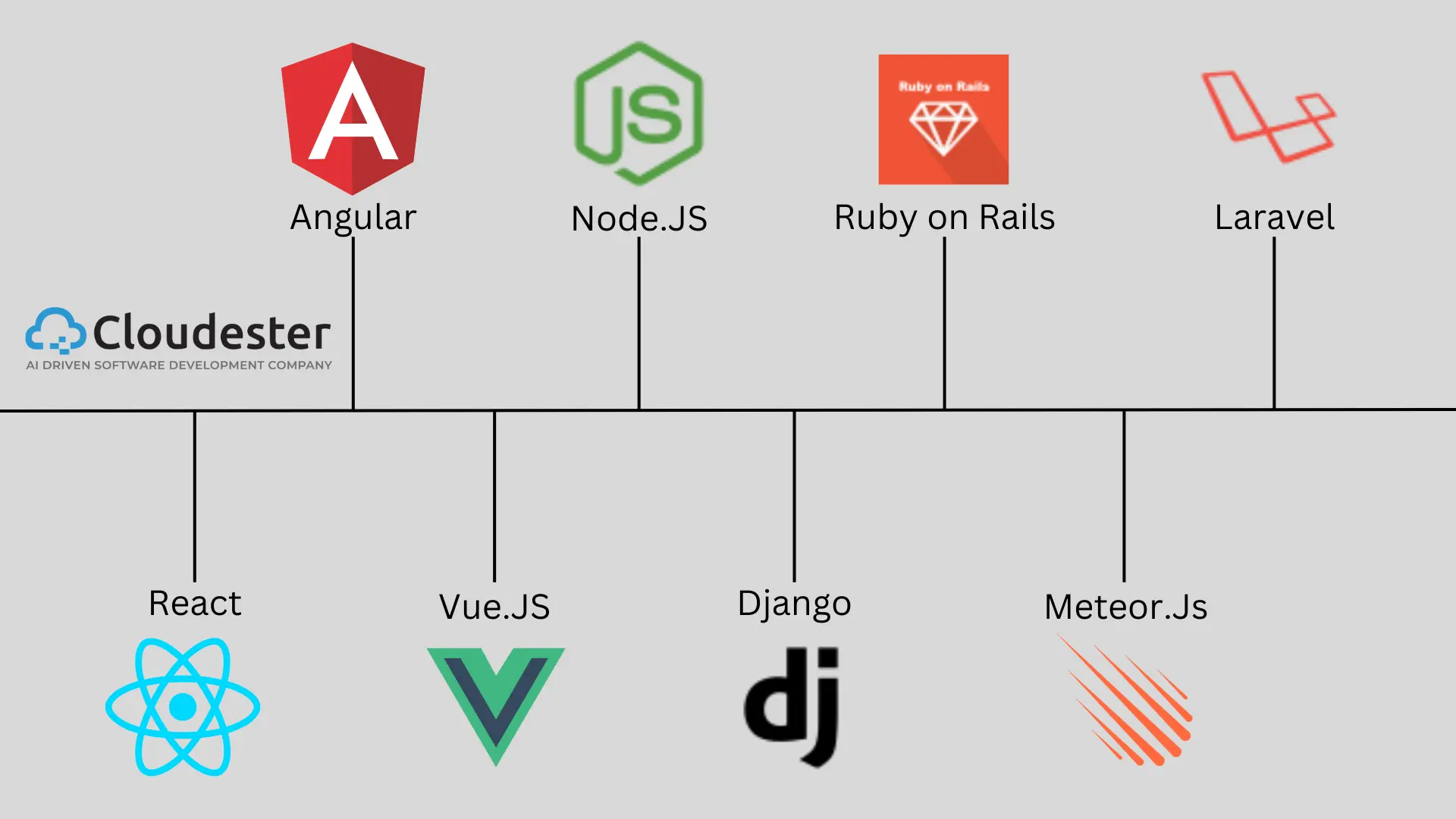Web development is evolving faster than ever. Whether you're building a personal portfolio, an e-commerce platform, or a complex SaaS application, choosing the right framework in 2025 can make or break your project.
In this article, we’ll explore the top frontend and backend frameworks that are dominating the developer world right now—along with what makes each one special, and when to use them.
⚛️ Best Frontend Frameworks in 2025
Frontend frameworks focus on the client-side—what users see and interact with.
1. React.js
Created by: Meta (Facebook)
Why it’s great: React is the most popular library for building UI components. It’s fast, flexible, and has a huge ecosystem.
Key Features:
Component-based structure
Virtual DOM for better performance
Strong community and job market
Works seamlessly with frameworks like Next.js
Best for: Interactive single-page applications (SPAs), dashboards, and cross-platform apps.
2. Next.js
Built on: React
Why it’s great: Next.js adds powerful features like server-side rendering (SSR), static site generation (SSG), and routing—all with great developer experience.
Key Features:
SEO-friendly
Built-in API routes
Image and font optimisation
Hybrid rendering (SSG + SSR)
Best for: Blogs, marketing sites, SaaS dashboards, and high-performance React apps.
3. Vue.js 3
Created by: Evan You
Why it’s great: Vue is beginner-friendly, reactive, and has a clean syntax.
Key Features:
Composition API
Lightweight and fast
Built-in directives and transitions
Easy to integrate with existing projects
Best for: Small to medium web apps, prototypes, and teams that prefer simplicity.
4. Svelte & SvelteKit
Why it’s great: Svelte compiles your code into pure JavaScript at build time, resulting in ultra-fast performance and minimal bundle sizes.
Key Features:
No virtual DOM
Simple syntax
Reactive by default
Great for performance-focused apps
Best for: Startups, landing pages, progressive web apps.
5. Angular 17
Created by: Google
Why it’s great: Angular is a full-fledged framework with everything built in—from routing to HTTP handling.
Key Features:
TypeScript-based
Dependency injection
Enterprise-level support
Angular CLI for quick scaffolding
Best for: Large-scale enterprise apps, regulated environments, and apps requiring a strong architecture.
🔧 Best Backend Frameworks in 2025
Backend frameworks handle the server-side logic, databases, authentication, APIs, and more.
1. Node.js (with Express.js)
Why it’s great: Node.js allows you to write server-side code in JavaScript. When paired with Express, it’s lightweight, fast, and great for REST APIs.
Key Features:
Asynchronous & event-driven
Massive npm ecosystem
Scalable and flexible
Works well with MongoDB
Best for: Real-time apps, microservices, single-page apps (with React/Next.js).
2. Laravel (PHP)
Why it’s great: Laravel modernises PHP development with clean syntax, built-in routing, authentication, and database migrations.
Key Features:
Elegant MVC structure
Artisan CLI
Blade templating engine
Built-in testing and queues
Best for: Web apps, content-driven sites, eCommerce.
3. Django (Python)
Why it’s great: Django is a secure, batteries-included framework that helps developers build fast, scalable apps with minimal code.
Key Features:
Admin panel
ORM (Object Relational Mapping)
Form handling
Security built-in
Best for: Startups, CMS platforms, academic or data-focused apps.
4. Ruby on Rails
Why it’s great: Rails is known for “convention over configuration” and rapid development. It powers apps like GitHub and Shopify.
Key Features:
Full-stack framework
Built-in scaffolding
Emphasis on developer happiness
Huge library of gems
Best for: MVPs, startups, and web apps that need fast iteration.
5. Spring Boot (Java)
Why it’s great: Spring Boot simplifies Java development with built-in production-ready features. It’s trusted by enterprises for reliability and security.
Key Features:
Microservice-friendly
Dependency injection
RESTful APIs
Scalable and maintainable
Best for: Large-scale enterprise applications, financial or healthcare systems.
Bonus: Bun (New Runtime for JavaScript)
Why it matters in 2025: Bun is gaining popularity as a faster alternative to Node.js, with a built-in bundler, transpiler, and test runner.
Best for: Developers who want cutting-edge performance for JavaScript apps.
💡 What to Consider When Choosing a Framework
🔍 Your Project Type:
Static site? → Next.js, SvelteKit, Astro
Enterprise dashboard? → Angular, React + Spring Boot
API backend? → Node.js + Express, Django REST Framework
Blog or CMS? → Laravel, WordPress REST, Ghost (Node)
🧠 Developer Experience:
Do you or your team prefer JavaScript, Python, PHP, or Java?
How large and active is the community?
Is there good documentation and support?
🔧 Tooling & Ecosystem:
Does it support CI/CD, testing, and linting?
Does it have built-in authentication, ORM, and caching?
How easily can you deploy (e.g., on Vercel, Netlify, or DigitalOcean)?
💸 Performance & Hosting Costs:
Lightweight frameworks (like Svelte or Astro) can reduce server costs.
Node.js and Python scale easily on serverless platforms.
🎯 Final Thoughts: Which Framework Is Right for You?
There’s no universal “best” framework—it depends on your project goals, tech stack, and preferences.
But here’s a quick cheat sheet:
| Use Case | Recommended Stack |
|---|---|
| Rapid MVP build | Next.js + Node.js or Django |
| Enterprise web app | Angular + Spring Boot |
| Developer portfolio | SvelteKit or React |
| Blog or CMS | Laravel or Django |
| Real-time chat app | Node.js + Socket.io |
| AI-powered web app | React + FastAPI |
🧑💻 Start with what you know, but don’t be afraid to try something new in 2025.
The web is evolving—embrace the frameworks that help you build faster, better, and smarter.












Recent Comments
No comments yet.